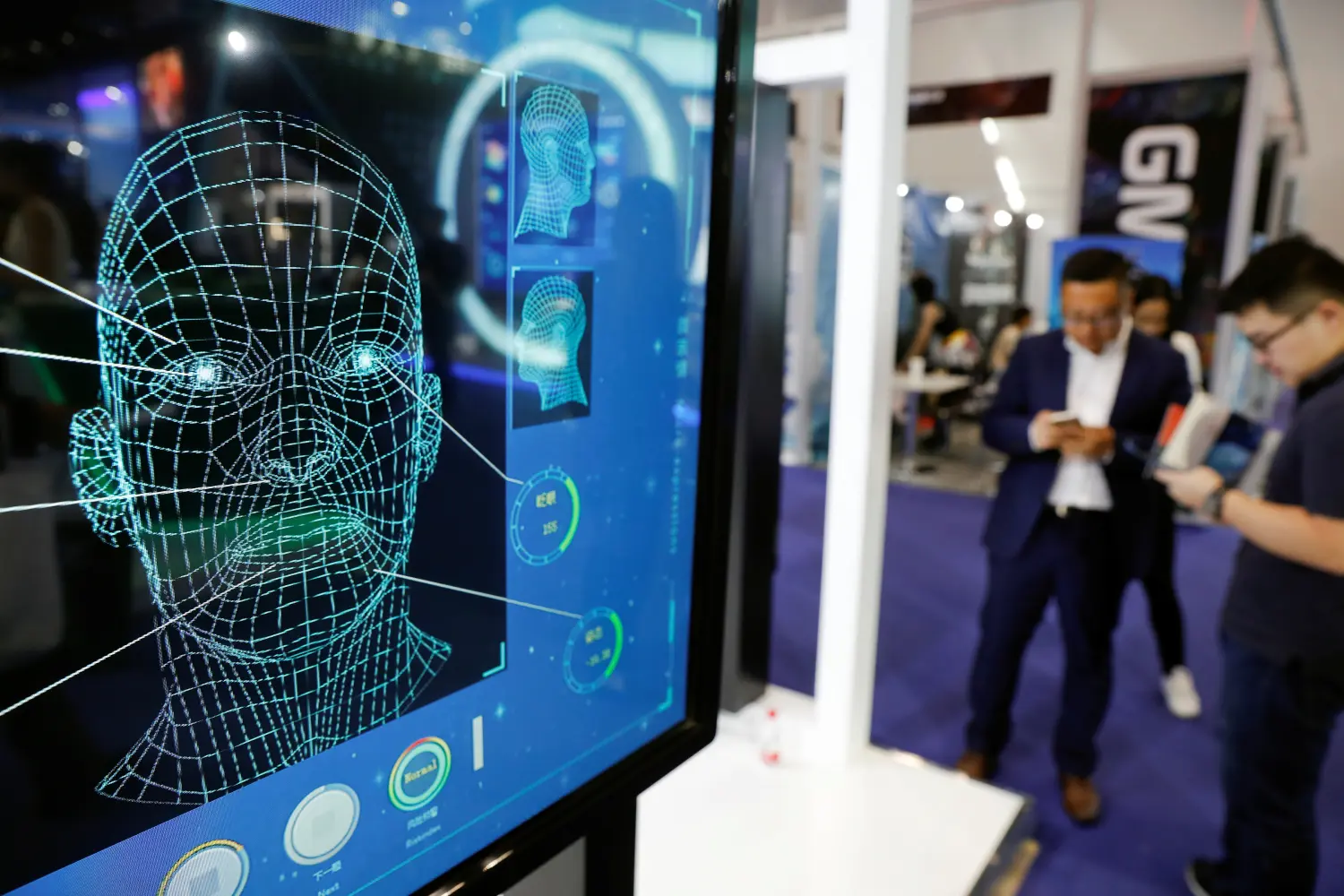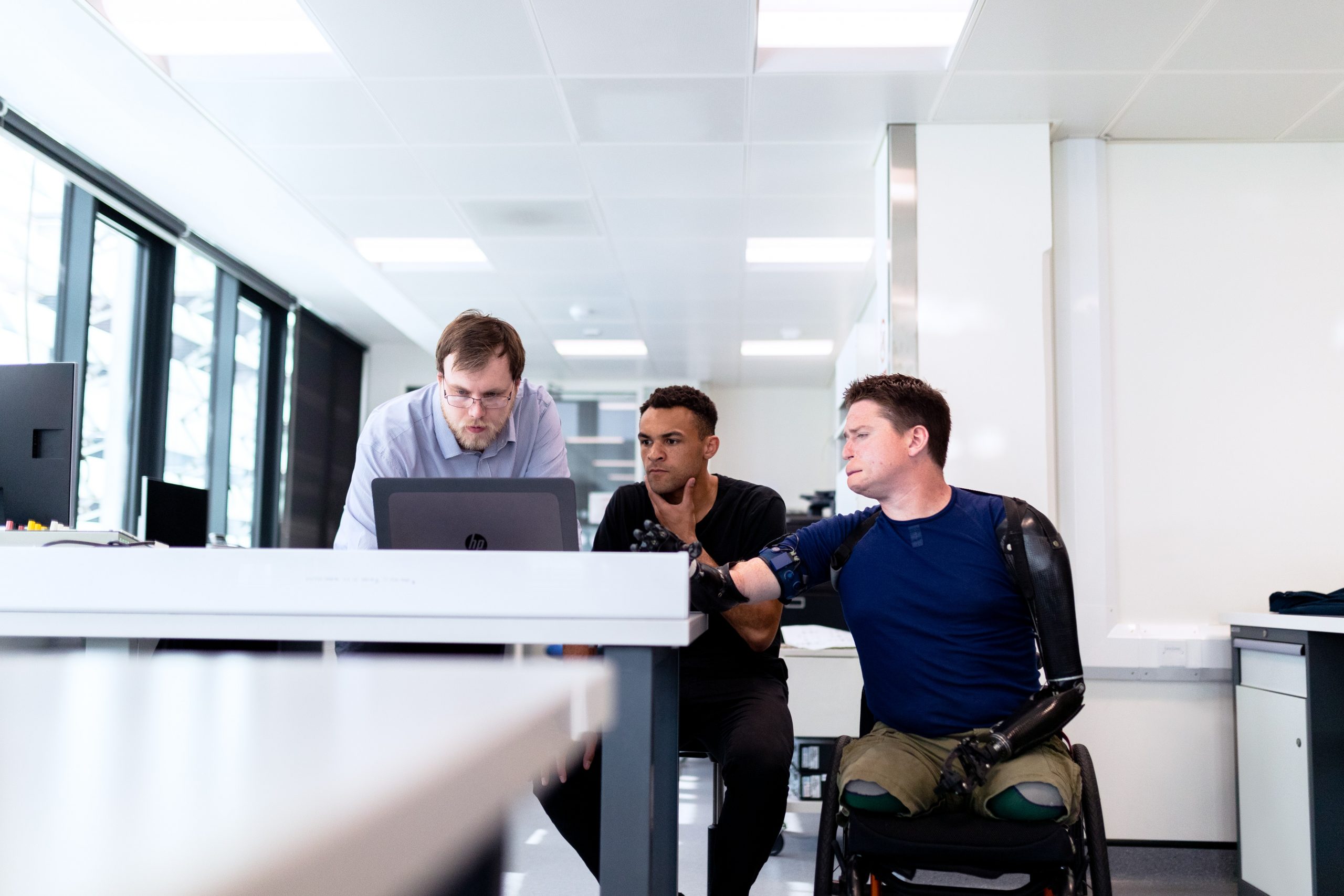The Hard Truths: Three Critical Barriers Standing Between AI Innovation and Universal Accessibility
Dinis GuardaAuthor
Thu Nov 27 2025

Explore why one billion people lack access to assistive technology, the impact of workplace stigma and AI bias, and discover the solutions for a more inclusive future.
Part 6 of Wisdomia's Deep Dive into AI, Inclusivity, and Neurodiversity
When Technology Isn't Enough

We've explored the transformative potential, 2.5 billion people needing assistive technology, revolutionary AI applications, groundbreaking academic research, corporate success stories, and evolving global policy frameworks.
But here's the uncomfortable reality: one billion people are still denied access to the assistive technology they need.
Despite Microsoft's 30-year commitment, Be My Eyes' 43 million requests, Stanford's paradigm-shifting research, and 185 countries ratifying the UN Convention on Rights of Persons with Disabilities, the gap between possibility and reality remains vast.
This article confronts three interconnected barriers that stand between today's innovations and tomorrow's inclusive world: affordability and access, workplace stigma and algorithmic bias. Understanding these obstacles is the first step to overcoming them.
Barrier 1: The Affordability Crisis

The 3% vs. 90% Reality
Access to assistive technology varies from 3% in low-income countries to 90% in high-income countries, a geographic lottery that determines whether someone with a disability can participate in education, employment, and community life.
The numbers are sobering:
- 80 million people need wheelchairs globally; only 5-35% have access depending on their country
- 1.5 billion people experience hearing loss; production meets less than 10% of global demand
- Unaddressed hearing loss alone costs $980 billion annually in lost productivity
The Out-of-Pocket Burden
Around two-thirds of people with assistive products report out-of-pocket payments, creating household financial strain. Advanced devices, powered mobility aids, smart wearables, AI-powered communication tools, remain prohibitively expensive for low-income populations even in wealthy countries.
A WHO survey of 70 countries found massive gaps in service provision and trained workforce for assistive technology, especially for cognitive, communication, and self-care support.
The Digital Divide Dimension
Many AI-powered assistive technologies require smartphones, reliable internet access, and digital literacy, resources billions of people lack. When cognitive support tools are English-only, non-English speakers are excluded. When solutions require cloud connectivity, rural populations are left behind.
The technology exists. But distribution, affordability, and infrastructure don't match the innovation.
Barrier 2: Workplace Stigma and the Knowledge Gap
The Disclosure Dilemma
A 2024 report revealed that 52% of neurodivergent professionals in the United States don't feel comfortable disclosing their condition at work, with fear of stigma as the main reason.
The statistics paint a troubling picture:
- 70% of adults agree there is stigma around asking for workplace accommodations (up from 60% in 2024, stigma is rising, not falling)
- 77% agree neurodivergent employees feel pressure to "mask" or conform to neurotypical behaviors
- 82% of neurodivergent individuals themselves report experiencing this masking pressure
- 64% worry disclosure would have negative impact on their career
The Support Gap
Only 34% of neurodivergent employees feel well supported at work, and one in three aren't satisfied with the support they receive.
Perhaps most damning: 53% believe neurodiversity programs are mostly for optics, corporate window dressing rather than genuine commitment.
The Knowledge Vacuum
Even when employees want to request accommodations, systemic failures prevent it:
- 68% have no idea what accommodations they're entitled to
- 51% don't know who to talk to about requesting accommodations
- 67% fear leaving their job due to difficulty finding another that would accommodate them
The Recruitment Barrier
76% of neurodivergent job seekers feel traditional recruitment methods, timed assessments, panel interviews, social networking requirements, put them at disadvantage. And 68% of HR professionals acknowledge their recruitment frameworks aren't designed to highlight neurodivergent strengths.
Yet we know from Part 4 that when properly supported, neurodivergent employees demonstrate 90-140% higher productivity and 90%+ retention rates. The problem isn't capability, it's process.
The talent exists. But stigma, fear, and broken systems prevent connection.
Barrier 3: Algorithmic Bias, Discrimination at Scale

The Most Disturbing Finding
Research from Purdue University examining AI and disability found that terms associated with developmental disabilities registered more negatively in AI language models than the declaration "I am a bank robber."
Let that sink in. AI systems, trained on massive datasets of human text, learned to view disability more negatively than criminal behavior.
This isn't a quirk. It's encoded discrimination that risks perpetuating and amplifying harmful stereotypes at the scale and speed only algorithms can achieve.
The Four Sources of AI Bias
1. Training Data Bias AI models learn from historical data that reflects past discrimination. When datasets underrepresent people with disabilities or portray them through stigmatized narratives, algorithms absorb these patterns.
2. Design Bias Developers without disability experience may overlook accessibility needs. "Normal user" assumptions exclude edge cases, which represent real people with real needs.
3. Deployment Bias AI recruitment tools may screen out neurodivergent candidates whose communication patterns differ from neurotypical norms. Automated systems fail to recognize non-standard speech or text. Performance metrics miss neurodivergent strengths.
4. Feedback Loop Bias AI systems learn from their own biased decisions, creating reinforcement cycles. Discrimination becomes faster, operates at larger scale, and becomes harder to detect or challenge than human bias.
The Real-World Impact
Research findings demonstrate the scope:
- Facial recognition less accurate for people with disabilities (Stanford)
- Voice recognition struggles with atypical speech patterns (MIT)
- Recruitment AI systematically screens out neurodivergent candidates (multiple studies)
- Design optimization for "average" users excludes people with different needs
When AI makes biased decisions about hiring, loan applications, healthcare triage, or educational placement, the consequences aren't just individual, they're systemic, affecting millions simultaneously.
The algorithms exist. But without careful design and monitoring, they encode discrimination rather than eliminate it.
The Interconnected Nature of Barriers
These three barriers don't exist in isolation, they reinforce each other:
Access limitations create stigma: When assistive technology is scarce or expensive, disability becomes associated with inability rather than different ability supported by tools.
Stigma prevents disclosure: When 70% perceive stigma around accommodations, people hide disabilities and don't request the assistive technologies that could help them succeed.
Bias perpetuates both: When AI systems encode stereotypes, they make automated decisions that deny access and reinforce stigma, continuing the cycle.
Breaking this cycle requires comprehensive approaches addressing all three barriers simultaneously.
Solutions Exist, We're Choosing Not to Implement Them

Here's the crucial insight: none of these barriers are inevitable. Each represents a failure of imagination, political will, or resource allocation, and each is addressable:
For Affordability and Access:
- Universal subsidy programs and voucher systems
- National assistive technology provision frameworks
- Tiered pricing models based on ability to pay
- Local manufacturing reducing import costs
- Open-source alternatives to proprietary solutions
- Infrastructure investment in connectivity and digital literacy
For Workplace Stigma:
- Comprehensive education and training for all employees
- Clear, publicized accommodation request processes
- Designated accommodation coordinators in every organisation
- Anti-stigma campaigns emphasizing business benefits
- Employee resource groups providing peer support
- Proactive accommodation offers rather than waiting for requests
- Transparent policies protecting against discrimination
For Algorithmic Bias:
- Mandatory bias auditing before AI deployment
- Diverse development teams including people with disabilities
- People with disabilities as engineers and designers, not just users
- Explainable AI (XAI) allowing inspection of decision-making
- Human oversight mechanisms for high-stakes decisions
- Continuous monitoring and remediation
- Third-party evaluation and community accountability
The knowledge exists. The question is whether we'll act on it.
The Rising Stigma Problem
One statistic deserves special attention: stigma around workplace accommodations increased from 60% to 70% between 2023-2024.
Despite growing awareness, corporate neurodiversity programs, and accessibility innovations, stigma is getting worse, not better.
This suggests that surface-level diversity initiatives without genuine cultural change may actually increase cynicism and resistance. When employees perceive programs as "optics" (53% do), the backlash can exceed the benefit.
Performative inclusion can be worse than no inclusion at all.
From Barriers to Enablers

The path forward requires transforming barriers into enablers:
From Access Scarcity to Access Abundance Universal design, economies of scale, and policy prioritization can make assistive technology as ubiquitous as eyeglasses—common tools that enable capability rather than markers of disability.
From Stigma to Celebration Cultural shift recognizing neurodiversity and disability as sources of innovation, perspective, and human richness rather than deficits to overcome.
From Bias to Equity AI systems designed with accessibility as foundational requirement, diverse development teams, and continuous monitoring to ensure algorithms serve all people fairly.
The Uncomfortable Question

If we know these solutions work, and the technology exists, and the business case is proven—why haven't we implemented them at scale?
The honest answer is uncomfortable: because the people affected by these barriers lack political and economic power to demand change. Because corporations prioritize short-term profits over long-term social benefit. Because privileged populations don't experience these barriers and thus don't perceive their urgency.
The barriers persist not because they're insurmountable, but because we've collectively decided they're acceptable.
Choose Action Over Inevitability
This chapter has confronted hard truths: one billion people denied access, 70% perceiving stigma, AI systems rating disability worse than crime.
But despair is both inaccurate and unproductive. These barriers are not inevitable features of reality—they're choices we're making through action or inaction.
Every barrier has identified solutions. Every obstacle has a path through it. What's missing isn't knowledge or technology. What's missing is the collective will to prioritize accessibility as fundamental rather than optional.
In Parts 1-5, we explored the need, the innovations, the research, the corporate successes, and the policy frameworks. This chapter has examined why, despite all that progress, massive gaps remain.
The question moving forward isn't whether we can create an inclusive world. It's whether we will.
That's what our final chapter explores: the path from here to there, from today's reality to tomorrow's possibility, from barriers to breakthroughs.
Continued from Part 5: "The Rules of the Game: How Global Policy Is Shaping AI Accessibility from Rights to Reality"
Based on research from "AI Inclusivity, Neurodiversity and Disabilities: A Comprehensive White Paper on Artificial Intelligence as a Transformative Force" by Dinis Guarda
Key Challenge Statistics:
- 1 billion people denied access to needed assistive technology
- 3% access in low-income countries vs. 90% in high-income countries
- 70% perceive workplace accommodation stigma (rising from 60%)
- 52% uncomfortable disclosing neurodivergence at work
- AI models rate disability terms worse than "bank robber"
Critical Insight: None of these barriers are inevitable, each represents addressable failures of imagination, will, or action.
Next in this series: Part 7 will explore the path forward, from incremental improvement to systemic transformation and the choices that will determine whether accessibility becomes universal or remains privilege.
Share this

Dinis Guarda
Author
Dinis Guarda is an author, entrepreneur, founder CEO of ztudium, Businessabc, citiesabc.com and Wisdomia.ai. Dinis is an AI leader, researcher and creator who has been building proprietary solutions based on technologies like digital twins, 3D, spatial computing, AR/VR/MR. Dinis is also an author of multiple books, including "4IR AI Blockchain Fintech IoT Reinventing a Nation" and others. Dinis has been collaborating with the likes of UN / UNITAR, UNESCO, European Space Agency, IBM, Siemens, Mastercard, and governments like USAID, and Malaysia Government to mention a few. He has been a guest lecturer at business schools such as Copenhagen Business School. Dinis is ranked as one of the most influential people and thought leaders in Thinkers360 / Rise Global’s The Artificial Intelligence Power 100, Top 10 Thought leaders in AI, smart cities, metaverse, blockchain, fintech.









